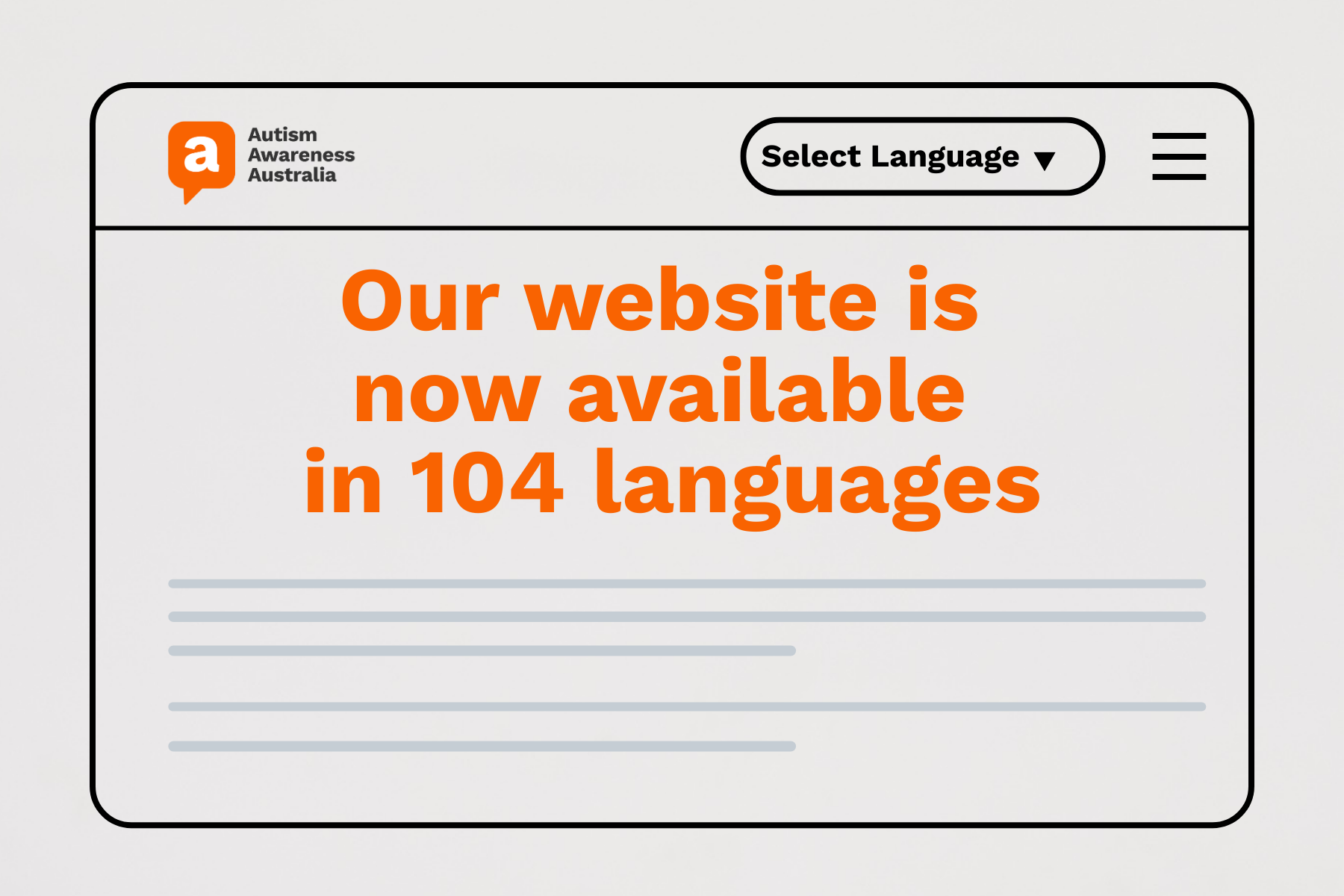Tips for engaging young autistic learners

Just like their peers, children on the autism spectrum need to learn and develop skills that will assist them in fulfiling their potential throughout their lives.
Although they may approach learning opportunities differently, or require more time and support, with the right guidance and accommodations in place, they can smash milestones, achieve goals and enjoy their early education.
In this post, we’ll explore some practical strategies for engaging young autistic children so they can reach their full potential while in early education. We’ll also share where early childhood educators can access further support in helping autistic children in their care to learn and grow alongside their peers.
- Understanding the child
- Developing positive partnerships with families and therapists
- Creating an inclusive environment
- Seeking external support
- Your next steps
Understanding the child
‘If you’ve met one person with autism, you’ve met one person with autism.’
This is a very popular saying within the autism community, but it’s also relevant to early childhood educators, too. Although there are some experiences that many people with autism can relate to, every autistic person is still an individual with their own strengths and support needs. Not every child with autism will think, feel and behave in the same way, and the support they need may also change over time.
When supporting autistic children, it’s vital to understand them as an individual to ensure routines, experiences and learning opportunities can be adapted to reflect their abilities while encouraging them to develop and participate. Here are some things to consider when getting to know a child with autism in your room or centre:
Sensory sensitivities
Are there certain sensory stimuli that a child finds upsetting (e.g., bright lights, loud noises?) Are there certain stimuli they find comforting (e.g., the pressure of a weighted toy or blanket, the feeling of certain fabrics?)
Emotional regulation
Does the child struggle to identify their emotions? Do they find regulating their ‘big’ emotions more challenging than their peers? What situations make them emotional, and how can these be adapted?
Educators play a vital role in helping children to develop emotional regulation skills. Autistic children might require more support in this area than their neurotypical peers. The following strategies can be helpful:
- Label emotions verbally and clearly. E.g., ‘Look! Sally is smiling. She is happy,’ or, ‘I’m so excited! Give me a high-five.’
- Ask children how their body feels when they experience an emotion they can’t articulate. E.g., ‘You seem nervous. Does your tummy feel funny?’
Big emotions vs meltdowns
While big emotions (sometimes referred to as tantrums) are usually short-lived and goal-oriented (meaning, children have tantrums in order to get or do something they want), meltdowns are intense responses to complete sensory overwhelm. It’s important to know that unlike with big emotions, autistic people are unable to regulate their behaviour when experiencing a meltdown.
Meltdowns are both physically and emotionally exhausting for autistic children and have a long recovery period, meaning preventing them from occurring in the first place is ideal. You can learn more about the difference between tantrums and meltdowns and how to prevent them so a child’s learning isn’t disrupted here.
Developing positive partnerships with families and therapists
A child’s family or carers are their first teachers, and their background, values and perspectives have enormous influence on the learning and developmental outcomes they wish to see their child achieve. By developing a positive relationship with an autistic child’s family, you’ll be able to gain their perspective on what helps their child to feel comfortable and be able to learn.
Communicating regularly and openly with a child’s family or carers ensures that educators can stay up to date with what is happening for the child and where they need support. It also gives parents and carers a chance to share information from home or a child’s therapy team that could assist you in your teaching practices. Sharing and listening using strength-based language and without judgement is key here, as well as clarifying any points of confusion from either party.
Sometimes, a child’s family/carers and their educators might not see eye to eye on how to approach learning or expectations around food, sleep and behaviour. This doesn’t mean that the relationship is permanently fractured, it just means open communication is even more important than ever. Disagreements aren’t necessarily anyone’s fault, or mean the family should move on from your centre, just that a new approach is required to return to the primary goal of supporting the child in partnership.
Building a positive relationship with a child’s family can feel nerve-wracking for early childhood educators. ‘Navigating Autism: The Early Years’ provides free, evidence-based guidance to help educators approach families with confidence and sensitivity.
Creating an inclusive environment
Creating an inclusive early learning centre for all children is a vital step in engaging autistic learners. This requires considering every child’s strengths, interests and support needs, and ensuring that every activity and learning experience reflects these, while still encouraging children to grow and develop. And inclusivity doesn’t stop with physical spaces - it also refers to the policies, attitudes and procedures that impact a child’s learning experience.
Here are some places and things to consider when assessing and adapting an early learning environment for inclusivity:
Your room
- Adjust existing environments rather than creating separate or new ones. An autistic child should have the opportunity to participate in activities alongside their peers, even if they might approach them differently.
- Create clear areas for different activities (e.g., spaces where children need to be quiet, spaces where children can be loud).
- Keep it simple. You don’t need complicated, fancy or expensive resources to be inclusive. Simple structures, colours and instructions are always best.
- Cater to a diverse range of interests. Many children with autism have topics they are intensely interested in, and incorporating these into their learning can encourage their engagement (e.g., dinosaurs, certain fictional characters).
Accommodations
- Observe a child’s actions at different points in the day to determine whether an activity or routine is aiding their learning or not. Do they seem confused, uncomfortable or not engaged?
- Determine the signs an autistic child is engaged and happy. Just because a child isn’t making eye contact with you or smiling, doesn’t mean they aren’t enjoying themselves!
- Provide alternative food options to accommodate for sensory sensitivities involving food, which are very common for children with autism.
- Schedule plenty of downtime and breaks between learning activities to give the child a chance to relax, rest and process what they have learnt.
- Try to ensure all staff remain as consistent as possible in your schedules, activities and approaches to supporting the child. Autistic children thrive on consistency and predictability. When there’s no alternative to a change being made, give the child as much notice as possible and communicate this change in a way they understand (e.g., using a social story).
Visual schedules and social stories
A visual schedule is any resource that provides instructions, guidance or support with an activity, transition, process or behaviour. This could be an overview of the day’s activities, step-by-step instructions for completing a task (e.g., washing your hands) or anything else that helps a child participate.
Social stories are created to introduce and explain an activity, event, place or social situation to an autistic child. They follow a structured narrative and are usually created for specific children to address their needs and abilities. They can be created by a child’s therapists, educators or family/carers. When read in a positive and relaxed setting, they can teach a child what to expect and how to respond in certain situations in a way that is clear and engaging.
Transitions
Ensure transitions are clear and consistent and give plenty of notice if they need to change. It’s also important that you communicate and initiate transitions in a way the autistic child understands. This could be through a song, a visual schedule or sign or by using interactive apps, such as Time Timer or Little Timer Hatch Countdown.
Understanding the importance of inclusive education and what it looks like in practice is crucial for all early childhood educators. Check out our top strategies for inclusive early childhood education for further information and support.
Seeking external support
Sometimes, educators will require support from external parties or services to ensure that an autistic child is being included and supported in their learning journey. There are a range of support options available to educators, directors and other staff in early learning centres, regardless of background, type of centre or level of experience, and educators shouldn’t hesitate to investigate them if they feel they require them.
The Inclusion Support Program (ISP) is funded by Australia’s federal government, and encompasses three support options:
- Professional support: training educators to address inclusion barriers
- Specialist equipment: providing equipment such as portable ramps
- Funding: financial support in the event professional support or specialist equipment doesn’t address inclusion barriers
Funding is provided through the Inclusion Development Fund (IDF) and is categorised into distinct streams:
- IDF Subsidy for Immediate/Time Limited Support
- IDF Subsidy for Family/Day Care Top Up
- IDF Innovative Solutions Support
For more information about applying for external support to address an autistic child’s support needs, you can visit the Australian Department of Education website.
Your next steps
Engaging young autistic learners can require some additional time and adjustments to policies and procedures in your early learning centre. It may also require a few attempts before success is achieved. But, these extra measures and changes are, and always will, be worth the investment. Ensuring every child is an active participant in their own learning is vital for not only their growth and development, but for the success of an early learning centre as a whole.
Having support as an educator when working with an autistic child and their family can make this process much smoother and more positive for everyone involved. And that’s where ‘Navigating Autism: The Early Years’ comes in.
A free online course made in collaboration with industry-leading educators and clinicians, this program is made by and for early educators at every age, stage and in every setting. It covers everything an educator wants and needs to know in short videos alongside downloadable resources you can display in your room or distribute in your centre. From autism-specific information to ways to prioritise your own wellbeing, this course contains a wealth of information accessible anytime, anywhere. And best of all, it’s designed for self-directed learning, so you can complete each module whenever and however you like!
To learn more about ‘Navigating Autism: The Early Years’ and enrol for free, you can tap on the button below.






